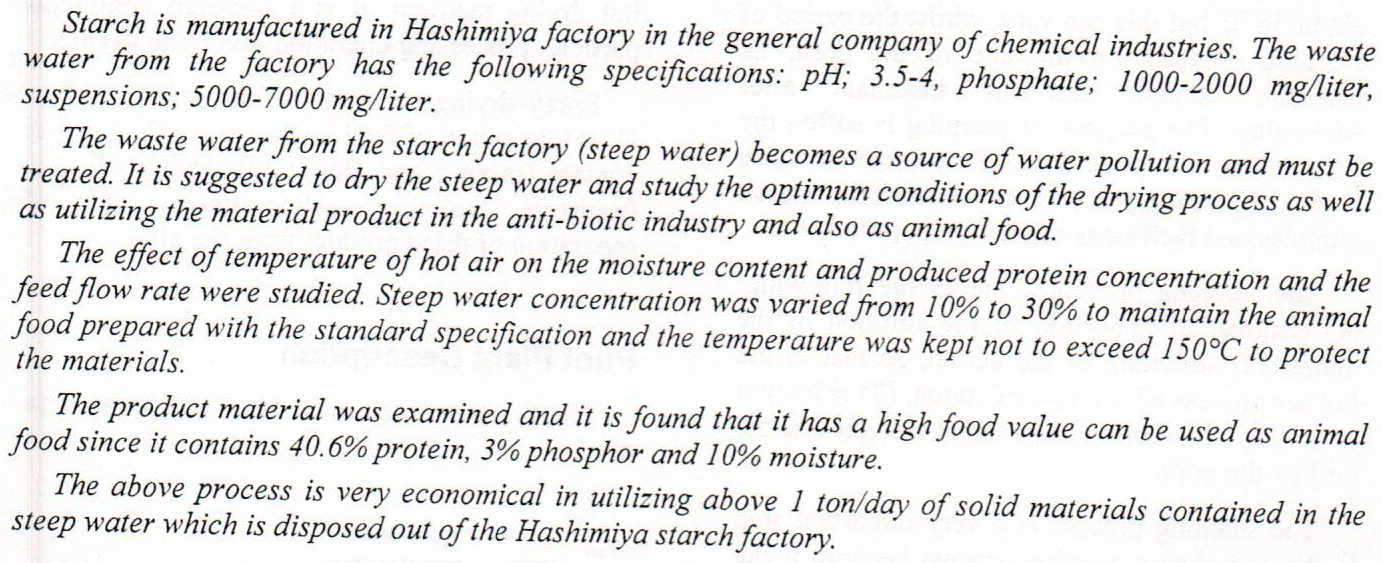
 (19)
(19)
 (21)
(21)
The physical, mechanical, electrical and thermal properties containing (Viscosity, curing, adhesion force, Tensile strength, Lap shear strength, Resistively, Electrical conductivity and flammability) of adhesive material that prepared from Nitrocellulose reinforced with graphite particles and aluminum streat. A comparison is made between the properties of adhesive material with varying percentage of graphite powder (0%, 25%, 30%, 35%, 40%) to find out the effect of reinforcement on the adhesive material. The ability of property an electrical was studied through the measurement of conductivity a function of temperature varying. The results of comparison have clearly shown that the increasing of conten
... Show More (7)
(7)
 (7)
(7)
The consumption of dried bananas has increased because they contain essential nutrients. In order to preserve bananas for a longer period, a drying process is carried out, which makes them a light snack that does not spoil quickly. On the other hand, machine learning algorithms can be used to predict the sweetness of dried bananas. The article aimed to study the effect of different drying times (6, 8, and 10 hours) using an air dryer on some physical and chemical characteristics of bananas, including CIE-L*a*b, water content, carbohydrates, and sweetness. Also predicting the sweetness of dried bananas based on the CIE-L*a*b ratios using machine learn- ing algorithms RF, SVM, LDA, KNN, and CART. The results showed that increasing the drying
... Show More (7)
(7)
 (7)
(7)
Changes in mechanical properties of material as a result of service in different conditions can be provided by mechanical testing to assist the estimation of current internal situation of these materials, or the degree of deterioration may exist in furnaces serviced at high temperature and exceed their design life. Because of the rarity works on austenitic stainless steel material type AISI 321H, in this work, ultimate tensile strength, yield strength, elongation, hardness, and absorbed energy by impact are evaluated based on experimental data obtained from mechanical testing. Samples of tubes are extracted from furnace belong to hydrotreaterunit, also samples from un-used tube material are used to make comparisons between these properti
... Show MoreIn this paper the effect of nonthermal atmospheric argon plasma on the optical properties of the cadmium oxide CdO thin films prepared by chemical spray pyrolysis was studied. The prepared films were exposed to different time intervals (0, 5, 10, 15, 20) min. For every sample, the transmittance, Absorbance, absorption coefficient, energy gap, extinction coefficient and dielectric constant were studied. It is found that the transmittance and the energy gap increased with exposure time, and absorption. Absorption coefficient, extinction coefficient, dielectric constant decreased with time of exposure to the argon plasma
 (25)
(25)
 (15)
(15)
The importance of specifying proper aggregate grading for achieving satisfactory performance in pavement applications has long been recognized. To improve the specifications for superior performance, there is a need to understand how differences in aggregate gradations within the acceptable limits may affect unbound aggregate base behavior. The effects of gradation on strength, modulus, and deformation characteristics of high-quality crushed rock base materials are described here. Two crushed rock types commonly used in constructing heavy-duty granular base layers in the State of Victoria, Australia, with three different gradations each were used in this study. The gradations used represent the lower, medium, and upper gradation li
... Show More (4)
(4)
 (3)
(3)
Conducting polyaniline / ZnO nano composites are synthesized
using a simplified cheap method with one step in –situ chemical
polymerization, and AC conductivity (σac) of the prepared samples is
studied in the range of frequency from 50 Hz to 15MHz.). The
presence of polarons in the conjugated polymer chain are responsible
for the ac conductivity is reliance on the frequency in these
composites. The effect of increasing the ZnO nano particle
concentration irradiation and gamma radiation on the electric
conductivity was analyzed. The result showed that the
nanocomposite prepared has the highest conductivity, from pure
polyaniline and the exponential factor S was found increasing with
ZnO content it was 0
 (2)
(2)
Cadmium sulfide (CdS) nanocrystalline thin films have been prepared by chemical bath deposition (CBD) technique on commercial glass substrates at 70ºC temperature. Cadmium chloride (CdCl2) as a source of cadmium (Cd), thiourea (CS(NH2)2) as a source of sulfur and ammonia solution (NH4OH) were added to maintain the pH value of the solution at 10. The characterization of thin films was carried out through the structural and optical properties by X-ray diffraction (XRD) and UV-VIS spectroscopy. A UV-VIS optical spectroscopy study was carried out to determine the band gap of the nanocrystalline CdS thin film and it showed a blue shift with respect to the bulk value (from 3.9 - 2.4eV). In present w
... Show More